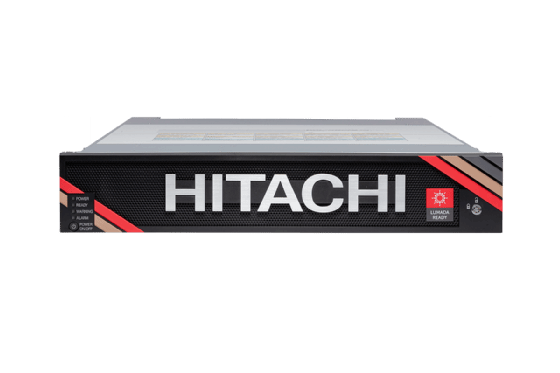
agsandrew - Fotolia
Hitachi takes its NVMe flash storage into midrange
Hitachi storage for E Series adds two midrange block arrays based on NVMe flash technology. E590 and E790 scale to 360 TB and differ in processing performance.
Hitachi Vantara moved its NVMe flash systems down market with models aimed at medium-size organizations.
Hitachi expanded its Virtual Storage Platform (VSP) E Series lineup with 2u E590 and E790 models. The new Hitachi storage arrays each scale to 360 TB of raw NVMe flash. The difference is the level of processing performance: E790 comes with 64 cores, while the E590 has 24 cores.
The vendor also added a Hitachi HNAS 5000 file appliance with hardware-enabled data reduction and previewed Hitachi Virtual Storage as a Service consumption pricing.
Hitachi Vantara: Midrange is big
Hitachi Vantara reasserted its presence in the enterprise market with the E Series launch in April. The high-end E990 scales to 1.4 PB in 13u of rack space. The VSP arrays are based on a large commercial storage system that Hitachi Vantara sells to commercial and industrial customers, including railways, construction companies and transportation systems.
Hitachi Vantara formed in 2017 as a subsidiary of Tokyo-based Hitachi Ltd. The vendor's storage business formerly was known as Hitachi Data Services. Around the same time, Hitachi changed the way it designs storage arrays, replacing custom flash modules in VSP with standard drives and hardware components.
Colin Gallagher, Hitachi Vantara's VP of infrastructure solutions products, said demand for flash-optimized Hitachi storage is growing across the board, but especially in organizations that could not afford it before. Gallagher said E590 and E790 arrays allow organizations with limited resources to implement flash performance.
"As we took the E990 to market, we had customer and [channel] partners ask us to deliver a storage system with a reduced amount of flash. These people may only buy one or two systems they use for capacity. They need it to easily fit in their data center," Gallagher said.

NVMe is a software-defined storage protocol that makes flash a viable option for smaller and midsize organizations. Early all-flash systems used SAS and SATA SSDs and mostly targeted large enterprises, including the Hitachi VSP F Series. Hitachi also sells the VSP G Series hybrid systems that combine SSDs and hard disk drives.
Hitachi Vantara defines midrange customers as having between 1,000 and 5,000 employees. Scott Sinclair, a storage analyst at Enterprise Strategy Group, said the Hitachi uses E Series to make flash a viable option for more organizations.
"The E Series strengthens Hitachi's offering in the enterprise space. NVMe is now the norm for production workloads. I don't believe in the idea of midrange storage systems being for mid-market companies and larger storage systems for enterprises. Digital data is growing so fast, and is distributed across so many locations, that you need a broad range of storage systems in place," Sinclair said.
All VSP arrays run the Hitachi Storage Virtualization Operating System software and are compatible with Hitachi Ops Center AI automated management software.
Dell EMC leads the storage market and recently launched its new midrange PowerStore array. Hitachi VSP midrange storage also must compete with HPE Primera, IBM FlashSystem, NetApp EFF6000 and Pure Storage FlashArray systems.
Hitachi NAS enhancements
To complement the expanded VSP storage, Hitachi introduced the HNAS 5000 front-end gateway for file consolidation. Gallagher said the NAS clustered namespace unifies data from multiple file systems and allows object tiering to the public cloud. Hitachi targets the NAS as a consolidation platform for sharing VSP and other vendors' storage across distributed environments.
As part of HNAS, data reduction has been shifted from the SVOS software to custom field programmable gate arrays in the box. The FPGAs are specifically optimized to deduplicate small files, Gallagher said.
Paying for storage by the drink is a hot trend, and Hitachi Virtual Storage as a Service (VStaaS) consumption pricing gives Hitachi a competitive offering to other major storage vendors' initiatives, such as HPE GreenLake, NetApp Keystone and Dell's Project Apex. Gallagher said the pay-as-you-go option is expected to be available from Hitachi channel partners in January. The managed cloud service differs from Hitachi EverFlex, which allows customers to pay for equipment purchases over time.








